Panasonic NR-BD31ES1 Handleiding
Bekijk gratis de handleiding van Panasonic NR-BD31ES1 (44 pagina’s), behorend tot de categorie Koelkast. Deze gids werd als nuttig beoordeeld door 74 mensen en kreeg gemiddeld 4.4 sterren uit 37.5 reviews. Heb je een vraag over Panasonic NR-BD31ES1 of wil je andere gebruikers van dit product iets vragen? Stel een vraag
Pagina 1/44

Operating Instructions
Refrigerator-Freezer
(Household use)
Model No.
NR-BD31ES1
NR-BD31EW1
English 2-15
Thank you for purchasing this Panasonic product.
Please read these instructions carefully before using this
product. Please keep this manual for future reference.
Included installation Instructions.
Deutsch 16-29
Wir danken Ihnen für den Kauf dieses Panasonic-Produkts.
Bitte lesen Sie diese Anweisungen vor der Benutzung dieses
Produkts sorgfältig durch. Bitte bewahren Sie diese Anleitung für
spätere Bezugnahme auf. Installationsanleitung enthalten.
Français 30-43
Nous vous remercions d’avoir acheté un produit Panasonic.
Veuillez lire ce mode d’emploi attentivement avant d’utiliser ce
produit. Prière de conserver ce mode d’emploi pour toute référence
ultérieure. Instructions d’installation incluses.
English Deutsch Français

222
Contents
What the symbols mean:
Do not Indicates the appliance must be earthed to
prevent electric shock
Make sure you do this Do not take apart
WARNING
Indicates risk of death or serious injury.
This appliance is not intended for use by persons (including children) with reduced physical, sensory or mental
capabilities, or lack of experience and knowledge, unless they have been given supervision or instruction concerning
use of the appliance by a person responsible for their safety.
Children should be supervised to ensure that they do not play with the appliance.
Do not use a multiple socket adaptor and plug several appliances into the same socket adaptor.
• This can cause overheating, re or short circuit.
Do not pinch, knot, or bend the mains lead, or place heavy objects on it.
• This increases the risk of re or electric shock. If the mains lead or plug of the appliance is damaged, it must be
replaced by the manufacturer, its service agent or similarly qualied person in order to avoid a hazard.
Do not unplug the refrigerator by pulling on the mains lead.
• This can damage to the mains lead. Always grip the mains plug and pull rmly from the socket.
Do not place any water container on the top of the refrigerator.
• Water can damage insulation of electrical components and cause short circuit, re or electric shock.
Do not spray inammable gas near the refrigerator.
• This can cause explosion or re.
Do not spray water onto or into the refrigerator.
• This can cause re or electric shock.
Do not touch the mains plug with wet hands.
• This can cause electric shock.
Do not install the refrigerator in a damp place, or where it may come into contact with water.
• Deteriorated insulation of electrical parts can cause short circuit, electric shock or re.
Do not store volatile or ammable substances in the refrigerator.
• Flammable substances such as benzene, thinners, alcohol, ether and Liquid Petroleum Gas (LPG) can cause
explosions.
Do not store pharmaceuticals or other temperature-sensitive products in the refrigerator.
• You should not store products that require strict temperature controls in the refrigerator.
Do not let children climb, swing or hang on the refrigerator door.
• This can cause serious injury, as well as damaging the refrigerator.
Do not operate the refrigerator in the presence of explosive fumes or ammable gas.
• This can cause explosion or re.
Do not store petrol or other ammable liquids and vapours in the refrigerator, or use them near the appliance.
• This can cause explosion or re.
Safety instructions ..........................................................2
Caring for the environment ............................................4
Installation .......................................................................5
Parts ..................................................................................7
Control panel ...................................................................8
Setting the temperature ..................................................8
Humidity control of “Fresh Case” Crisper ....................9
Making ice cubes .............................................................9
Removing and attaching shelves ...................................9
Defrosting the appliance ...............................................10
Care and Cleaning instructions ................................... 11
FAQs ...............................................................................13
Specications ................................................................15
Safety instructions

English
333
Safety instructions (continued)
-WARNING: Do not use mechanical devices or other means to accelerate the defrosting process, other than those
recommended by the manufacturer.
• This can cause damage to the interior of the refrigerator or cause an explosion.
-WARNING: Do not use electrical appliances inside the food storage compartments of the appliance, unless they are of the
type recommended by the manufacturer.
• This can cause explosion or re.
-WARNING: Do not damage the refrigerant circuit.
• This can cause explosion or re.
-WARNING: Do not open the cover of LED lighting of fridge interior.
• This can cause electric shock. If the LED lighting does not work correctly, it must be replaced by the manufacturer, its
service agent or similarly qualied person in order to avoid a hazard.
Do not try to disassemble, repair or modify the refrigerator yourself.
• You may injure yourself – or others – with burns or electric shock, or damage the refrigerator. If your appliance needs
alterations or repair, please consult authorized service centre.
Ensure that the refrigerator is plugged into an earthed mains socket. DO NOT plug into an unearthed mains
socket.
• A short circuit could cause an electrical shock.
Make sure the mains lead and plug are not squashed or damaged.
• A damaged mains plug or lead can cause short-circuit, re or electric shock.
• If the mains lead is damaged, it must be replaced by the manufacturer, its service agent or similarly qualied persons
in order to avoid a hazard.
• DO NOT ATTEMPT TO REPLACE IT YOURSELF.
Remove any dirt or dust from the mains plug’s pins before connecting to the power supply.
• Dust build-up on the mains plug can cause insulation failure, especially in humid conditions. This can cause short
circuit, re or electric shock. Unplug the mains lead and wipe it with a dry cloth. Never use a wet or damp cloth.
Plug your appliance into the socket, making sure the connection is secure.
• A loosely connected mains plug can cause re or electric shock.
Install the refrigerator in a well-ventilated area.
• The more refrigerant there is in an appliance, the larger the room it should be installed in. If there’s a refrigerant uid
leak, and the appliance is in a small room, the build up of combustible gases is more likely. This can cause re or
explosion. As a guide, for every 8 g of coolant, you’ll need at least 1 cubic metre of space in the room. The data plate
inside the appliance tells you how much refrigerant your refrigerator contains.
The refrigerant (R600a) used in the refrigerator and the gases in the insulation material (cyclopentane) are both
ammable. They also require special disposal procedures.
• Before you dispose of the appliance, make sure none of the pipes on the back are damaged. Refrigerant or gas leaks
can cause re or explosion.
Unplug the refrigerator before cleaning and servicing.
• Failure to do this can cause electric shock.
If you smell burning or see smoke coming from the refrigerator, disconnect the power immediately and please
consult authorized service centre.
• Failure to do this can cause re or electric shock.
-WARNING: Keep ventilation openings, in the appliance enclosure or in the built-in structure, clear of obstruction.
• Failure to do this could result in re or explosion because refrigerant cannot disperse if it leaks.
CAUTION
Indicates risk of injury or damage to property.
Do not put glass bottles or containers in the freezer.
• When the contents freeze, the glass may break.
Do not touch the inside walls of the freezer or items stored in the freezer with wet hands.
• Your skin can become frozen onto the interior wall, or items stored in the freezer.
Do not open or close the doors by taking hold of the door handles with both hands.
• This may cause personal injury.
Product specificaties
| Merk: | Panasonic |
| Categorie: | Koelkast |
| Model: | NR-BD31ES1 |
| Apparaatplaatsing: | Vrijstaand |
| Kleur van het product: | Roestvrijstaal |
| Deurscharnieren: | Rechts |
| Ingebouwd display: | Ja |
| Gewicht: | 73000 g |
| Breedte: | 600 mm |
| Diepte: | 650 mm |
| Hoogte: | 1850 mm |
| Netbelasting: | - W |
| Geluidsniveau: | 40 dB |
| Jaarlijks energieverbruik: | 154 kWu |
| Energie-efficiëntieklasse (oud): | A+++ |
| Brutocapaciteit vriezer: | - l |
| Nettocapaciteit vriezer: | 95 l |
| Vriescapaciteit: | 4.5 kg/24u |
| Draairichting deur verwisselbaar: | Ja |
| Nettocapaciteit koelkast: | 227 l |
| Brutocapaciteit koelkast: | - l |
| Koelkast binnenverlichting: | Ja |
| Soort lamp: | LED |
| Aantal planken koelkast: | 3 |
| Aantal groente lades: | 2 |
| Vriezer positie: | Onder |
| Bewaartijd bij stroomuitval: | 30 uur |
| Aantal planken vriezer: | 3 |
| Totale nettocapaciteit: | 322 l |
| Eierenrekje: | Ja |
| Totale brutocapaciteit: | 326 l |
| Klimaatklasse: | SN-T |
| AC-ingangsspanning: | 220 - 230 V |
| AC-ingangsfrequentie: | 50 Hz |
Heb je hulp nodig?
Als je hulp nodig hebt met Panasonic NR-BD31ES1 stel dan hieronder een vraag en andere gebruikers zullen je antwoorden
Handleiding Koelkast Panasonic

3 Maart 2025

26 Februari 2025
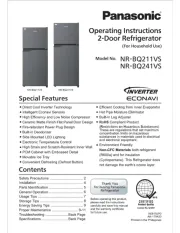
25 November 2024

25 November 2024
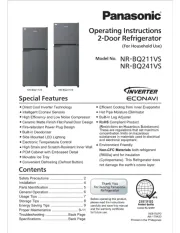
25 November 2024
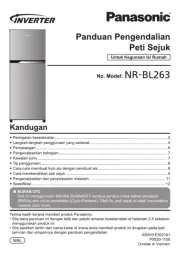
24 November 2024
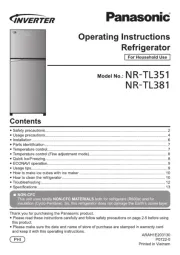
24 November 2024
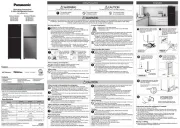
24 November 2024
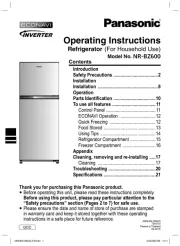
24 November 2024
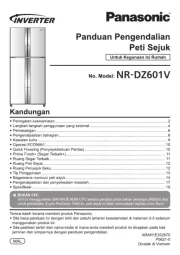
22 November 2024
Handleiding Koelkast
- Structural Concepts
- Saivod
- Iberna
- Exquisit
- Baumatic
- Rosieres
- Sheffield
- Orava
- Pando
- Norlake
- Heller
- Wine Klima
- Gladiator
- Tricity Bendix
- IKEA
Nieuwste handleidingen voor Koelkast
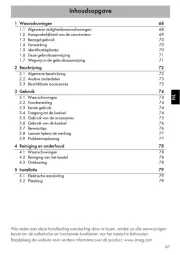
18 September 2025
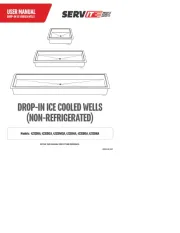
18 September 2025
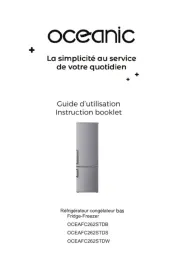
17 September 2025
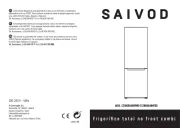
16 September 2025
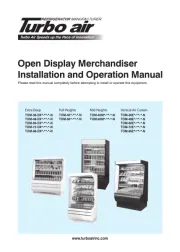
16 September 2025
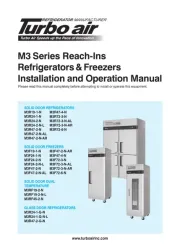
16 September 2025
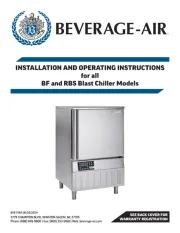
16 September 2025
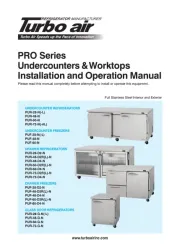
16 September 2025
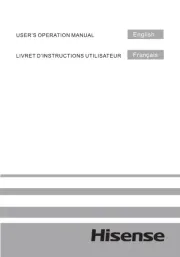
16 September 2025
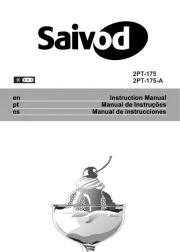
16 September 2025